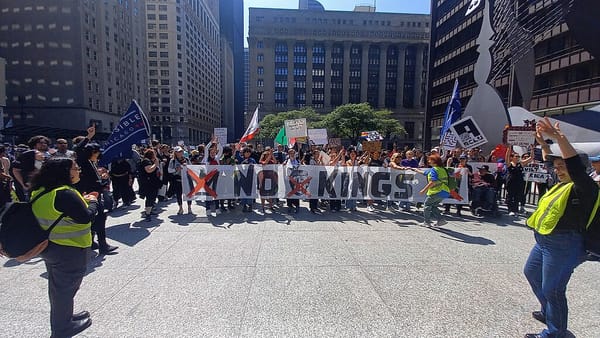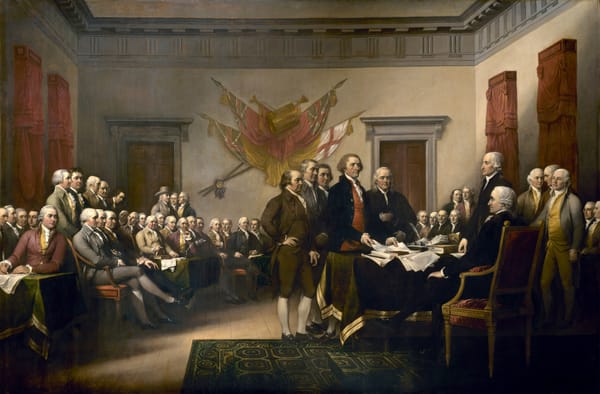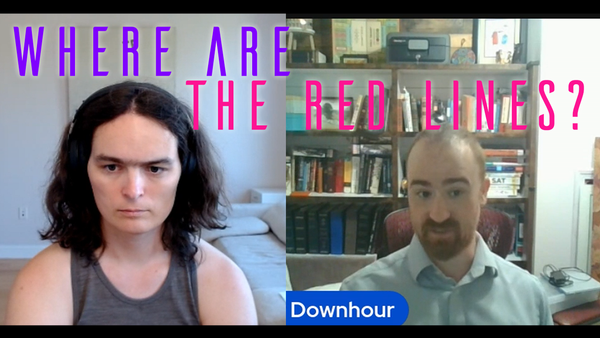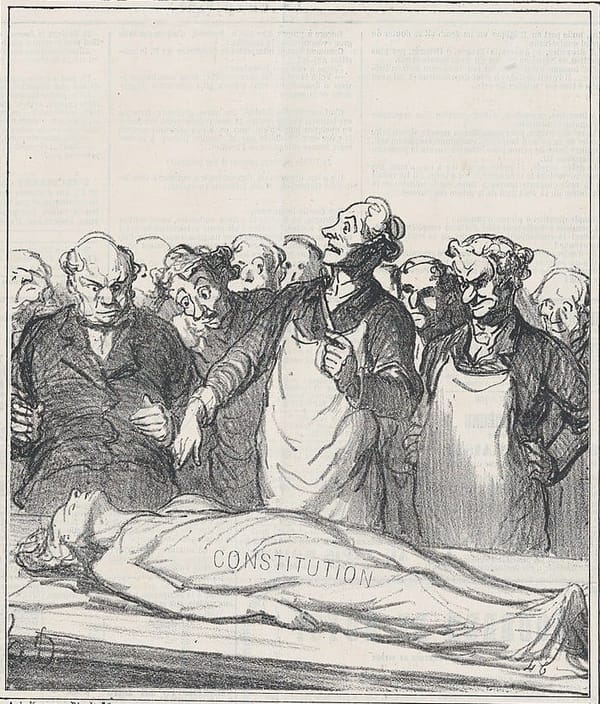End America's Institutional Provincialism
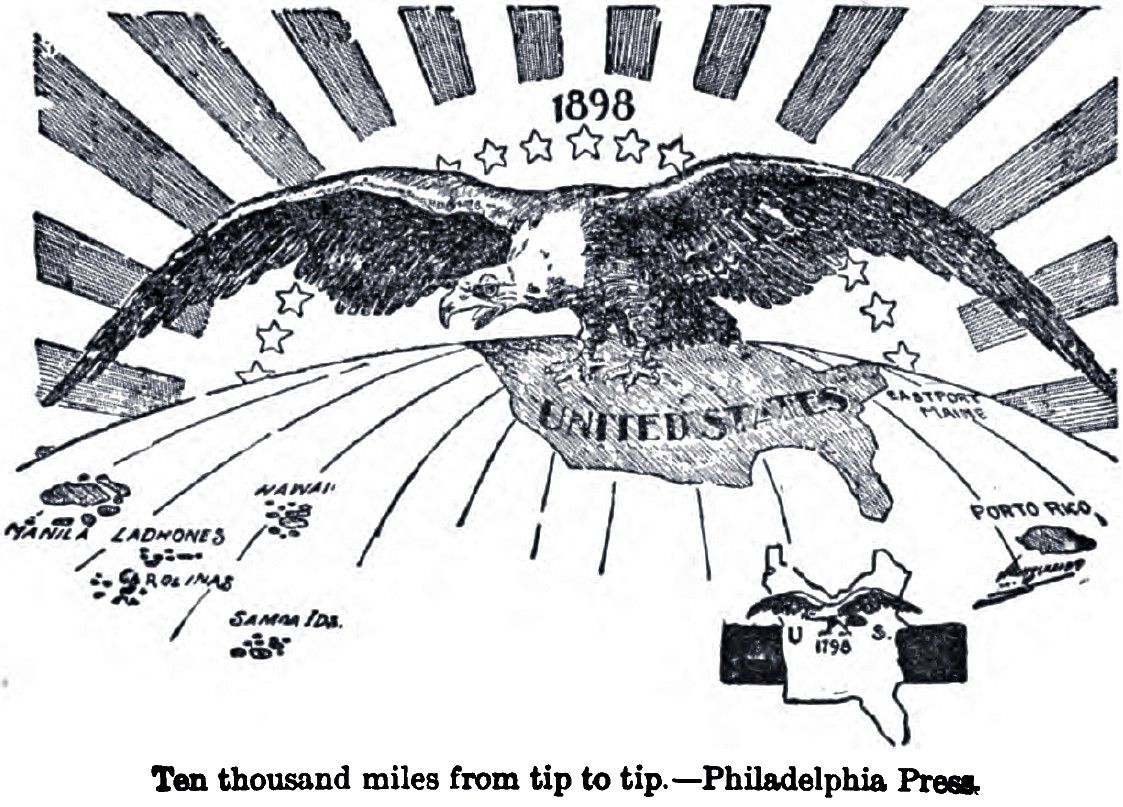
Most Americans take pride in our Constitutional order, and the basic grade school version of it—with checks and balances, the three branches, and so forth—that they are familiar with. But they do not really know our system, because you cannot understand a system without some grasp of how it might have been different. Our provincialism in this regard comes largely from a complacency born of decades of dominance. But it also comes from a certain lack of self-confidence. Americans are boastful in our patriotism, declaring our country the oldest and best democracy in the world. Yet there’s a certain defensiveness to the American patriot, a fear that changing a single aspect of our Constitutional order might bring the whole thing tumbling down. And never mind the importation of elements tried in other countries—the mere mention of a case from a foreign or international court by an American judge is enough to send some into cardiac arrest. God save the republic from such contamination!
The typical American understands neither what we have in common with other liberal democracies nor how we are truly different. Indeed most of us can barely ask the question.
Single volume comparative works such as A Different Democracy, which compares America to 30 other relatively populous and stable liberal democracies, are an invaluable source of understanding the many ways that our political institutions might have been different.
But it is often equally valuable to understand how and why we are the same as our peer nations. There are some areas where America appears to have been a genuine frontrunner that was consciously imitated by others—for example, our federalist system, our written Constitution, and our system of judicial review. In other areas, however, there has been global convergence across countries with very different cultures and ideologies. These have emerged in reaction to technological and sociological conditions that go beyond choices made by specific actors at specific times and places.
Consider the professionalized police department. Institutions of very similar character developed around the world over roughly the same period. This limits the extent to which we can say that specific events in America determined the nature of policing itself, rather than the particularities of how it is practiced here. One cannot say that policing was born from 18th century slave patrols, because policing was born independently at several times and in several places which did not practice slavery. The more limited claim that the practices in the rural areas in which there is some chronological overlap between the end of the slave patrol era and the establishment of the proto-modern sheriff or police department were influenced by that history is worth considering. American policing is also structured around America’s federalist system; a recent Washington Post analysis found that “there are more than 12,200 local police departments nationwide, along with another 3,000 sheriff’s offices.”
Nearly half of all local police departments have fewer than 10 officers. Three in 4 of the departments have no more than two dozen officers. And 9 in 10 employ fewer than 50 sworn officers.
These departments are not subject to a single, overarching national authority, the way that the British police are, among many others. This is a difference that makes a difference.
Here then, is the appropriate way to consider historical contingency: in a comparative context. Going through the particulars of who made what decision, and the ideological jostlings of the moment, is not without merit. But the overall analysis must look at the global, structural trends and compare the specific, contingent choices made across different nations, and even different localities, and how those choices bore out, in order to get a proper understanding of contemporary institutions.
Political parties
One of the global trends of the past two centuries across systems of every type—not just liberal democracies—was the rise of political parties as the chief means of organizing political power. The drafters of the Constitution famously failed to take this into account, despite the fact that parties of a certain sort were already a key element in British parliamentary government. But the party of Burke, and of the Hamiltonian Federalists, were nothing like the enormous national organizations that would emerge in the 19th century, and reach their zenith in the early 20th century.
The American situation with respect to parties is extremely unique. In particular, the fact that candidates are by and large selected through primary elections imposed on our parties by state laws and administered by public officials. No other country in the world has primaries with such broad citizen participation. In most other systems in the world, parties nominate their own candidates with a fairly small circle of insiders. At the outer limit, in Israel and Belgium for example, there are closed primaries in which dues paying members cast votes. In America, for “closed” primary states, one need only make sure to register for a party with the state in advance. There is no other criteria for participation. And in some states, of course, there are “open” primaries in which even this is not a requirement.
As a result, there really are no formal party organizations for any functional meaning of the term. There are informal factions that have the most sway on specific local primaries, and there is a party “brand” that our media environment has turned almost entirely national, where it used to be subject to a great deal of local variation (and hence congressional parties used to be quite heterogeneous in their policy positions). While there are no strong parties, there is strong partisanship; some 35-40 percent of voters will reliably vote for the same major party year after year. Combine this with a presidential system, and anyone who is able to obtain a plurality of votes in enough state primaries can become the candidate for the most powerful position in the country, running on a party brand that reliably gets close to half of the votes. And indeed, that is precisely what happened in the case of Donald Trump, a man with no prior political experience or ties to Republican Party leadership. Trump showed how far one could go with this system.
In other systems, outsiders can certainly have electoral success, but they must build a whole party around themselves first, and have a cadre of parliamentary candidates so they can have loyalists sitting in a majority of the seats, or become the largest member of a coalition government. They cannot simply show up in the way that Trump did; it takes a great deal more time and organization.
The American Progressives considered parties an aberration, an intrinsically corrupt form. They experimented with a number of measures aimed at eradicating them. But the party form is structurally determined; the only thing the Progressives accomplished was to make our party system especially dysfunctional.
Presidentialism and responsible government
The birth of presidentialism may be an artifact of the moment in which the Constitution was drafted. At the moment that Edmund Burke and his peers were rethinking parliamentarism after the controversies with the Crown of the 17th century, the drafters of the Constitution were considering similar questions but in the absence of an established hereditary monarchy. The American answer was to create a very powerful chief executive who was elected rather than hereditary, and a bicameral Congress, with the three parts each accountable to different constituencies. In this way, each part would have its own base of power and therefore none would be able to subsume any of the others.
The British, on the other hand, developed in a very different direction. After the Revolutionary Settlement of 1688, Parliament had taken control of the Crown’s finances, giving it the decisive advantage. At the time that the Constitution was ratified in America, Burke and his peers still believed that executive power was something exercised by the Crown through his ministers—that is, through the cabinet.
But already it had become the convention that when a cabinet had lost the confidence of Parliament—expressed through a simple majority of votes cast to that effect—the cabinet was expected to resign. Over time the fiction that the Crown was simply taking counsel gave way to the notion of responsible government, the idea that executive power was exercised by ministers who were accountable to parliament. This latter aspect, the accountability to parliament, eventually came to mean that each election led to the formation of a new government, to the point where it would not be an exaggeration to characterize parliamentary elections as chiefly the indirect means for selecting the executives.
As it happens, the Virginia Plan that was the most discussed proposal at the Constitutional convention would have had the legislature select the executive. Indeed, all of the plans except for Alexander Hamilton’s involved an executive selected by the legislature. Debates over the specific gridlocked, however, and in the end a last minute committee proposed the elector system which we more or less still have, and which few were satisfied with even then. The fact that agreement over the selection mechanism was such a struggle suggests that perhaps there were deeper interests which an alternative could not have surmounted. Still, one wonders whether a convention half a century or more later, with ample observation of responsible government’s track record, might have simply adopted that approach.
Responsible government is the overwhelmingly most common form of representative democracy in the world. In the comparative text A Different Democracy’s sample of 31 comparably stable and sizable liberal democracies, only 7 were presidential. It is embarrassing for most Americans to be unaware of the basics of this highly successful system.
The permanent bureaucracy
A structural convergence of even greater significance than the birth of the political party is the rise of an enormous permanent bureaucracy staffed by unelected civil servants and political appointees. Among OECD countries government employment on average accounts for around 17% of employment overall. These employees are tasked with managing the enormous expenditures of the government; which across OECD countries averaged a little over 40% of GDP. The US is entirely in line with both averages; with 24 million public employees or around 15% of our labor market, and total spending across the federal and state governments at around 38% of GDP. To give a sense of the scale involved here, the largest private employer in the world, Walmart, has 2.2 million employees, and its total annual revenue in 2020 was $559 billion, which is just 12.7% the size of the federal government’s 2019 spending alone, not including the substantial spending which occurs at the state level. The relative size of the permanent bureaucracy in terms of people or budgets—in any country, not just the US—is enormous compared to any other organization or institution.
The most crucial thing for our purposes is the relative size compared to the elected components of our government. There are 435 members of the House and 100 senators, and one president. Even accounting for their staff, there simply are not enough people to monitor the activities of the millions of people employed by the federal government. This is not a problem unique to the United States. In parliamentary systems, you have the members of Parliament, who are not a meaningfully larger group relative to the size of their permanent bureaucracy, and then you have the ministers, who are the formal heads of each ministry, and the Prime Minister who is the formal head of government overall. All together these electorally accountable figures are still a drop in the bucket compared to the colossal scale of their governments.
This is not something uniquely foisted upon Americans by Woodrow Wilson or Franklin Delano Roosevelt. Had those men never lived, we almost certainly would have ended up with a massive permanent bureaucracy anyway, which we would have likely blamed on whoever else happened to be president at the time. For reasons owing to economic growth in the wake of the Industrial Revolution and technological development, especially in the areas of communications and transportation, the creation of such bureaucracies became a structural matter, quite apart from the contingent developments in any given nation’s history.
The great danger is not that the permanent bureaucracy will overturn the American Constitutional order—it has been a central component of the small-c constitutional order for over a century, and of every other country for a similar timeframe. The great danger, instead, is that the elected branches will weaken and wither away, leaving the unelected bureaucracy with an entirely free hand. The Soviet Union and the short-lived fascist nations did not lack a large, modern bureaucracy; they simply lacked a democratic apparatus to check those bureaucracies. More commonly, such countries hold elections but the candidates are selected by authorities who are not democratically elected, and who have the power to remove them. Recent apologetics for Cuba have, for example, pointed to such elections as evidence that Cuba is not after all a dictatorship.
The best way to understand how the elected branches might keep the bureaucracy in check is to compare what our government does to what other governments do, and how it has worked out for each. Quite aside from finding the best arrangement, this comparison is needed to even begin to understand whether our government keeps the bureaucracy in check to any meaningful degree, because an empirically grounded sense of the possible can only be built through comparisons of this kind.
For example, our system in general is heavily stacked with political appointments. Incoming presidents have to fill about 4,000 positions, many of which also require confirmation in the Senate. By contrast, the cabinet of the UK is in many ways an extension of the party which controls Parliament, but the person just below them on the formal hierarchy of the ministry—the permanent secretary of that ministry—is not appointed, but is instead the highest level of the civil service. What is more, it is the permanent secretary who has authority over hirings, firings, and promotions within the ministry, in practice meaning that they have more influence on the rank and file than the minister. The American Attorney General, on the other hand, has several top positions which can only be filled through presidential appointment and Senate confirmation.
Advocates of the appointment system argue that it is more democratic, as it ties the fortunes of those in authority within the permanent bureaucracy to elections. Advocates of the British system like Joseph Heath argue that a measure of independence from elections allows subject level competence to develop in the permanent bureaucracy, whereas an appointments system that reaches too deep favors political connectedness over expertise. There is also a case to be made that the American checks and balances system largely checks elected branches against one another—the president against Congress, but also each chamber of Congress against one another—which results in an unbalanced system that gives the unelected bureaucracy a much freer hand. The fact that ministers are largely an extension of their parliaments creates a united front for shaping the character of the permanent bureaucracy and holding it accountable.
These questions are far too large to meaningfully address here, but the point is that you cannot even begin to frame them properly until you have some basic sense of how these matters have been addressed in other places and at other times.
Beyond exceptionalism
The authors of A Different Democracy call America’s constitutional order “a unique institutional mix.” What makes it unique is the combination of “presidentialism, federalism, and a particular type of bicameralism, that is, one that provides equal power to the states in the second chamber and has the same basic legislative powers as the first chamber” as well as “a strict two-party system, widespread usage of primary elections to nominate candidates, and single-seat districts with plurality elections.” Many of these characteristics, however, are individually present in many other countries. Federalism—the system in which some more local governments is granted domains in which the national government is not allowed to overrule them—is, if not the rule, then hardly uncommon. 13 out of the 31 liberal democracies studied in A Different Democracy are federalist.
So America is unique in some ways, and not in others. The ways we are different are not always good, and the ways we are the same are not always bad. How “exceptional” all of this makes us is something that can only be judged through a basic understanding of how other countries approach the same problems that all countries face.
Featured Image is Ten Thousand Miles From Tip to Tip

